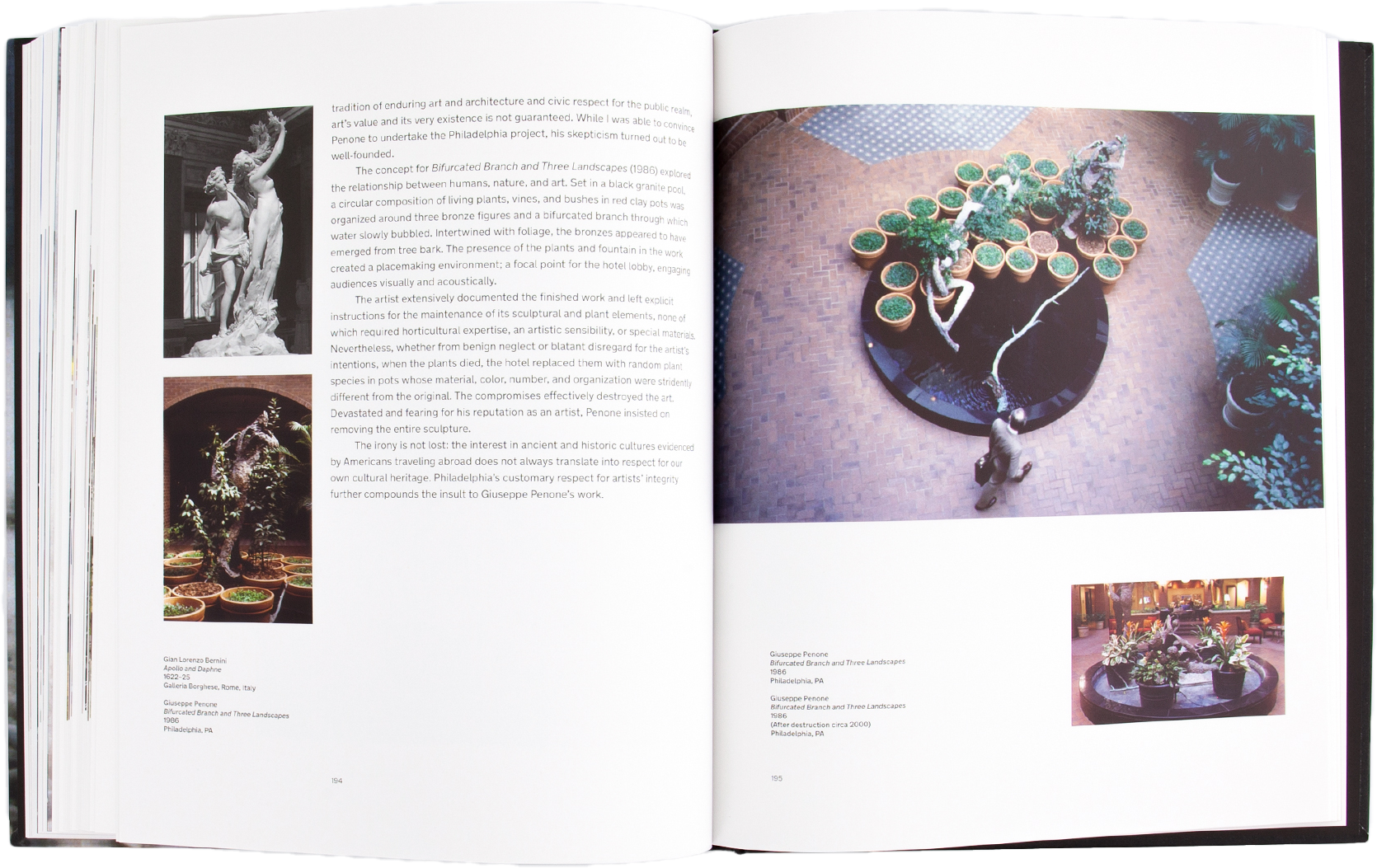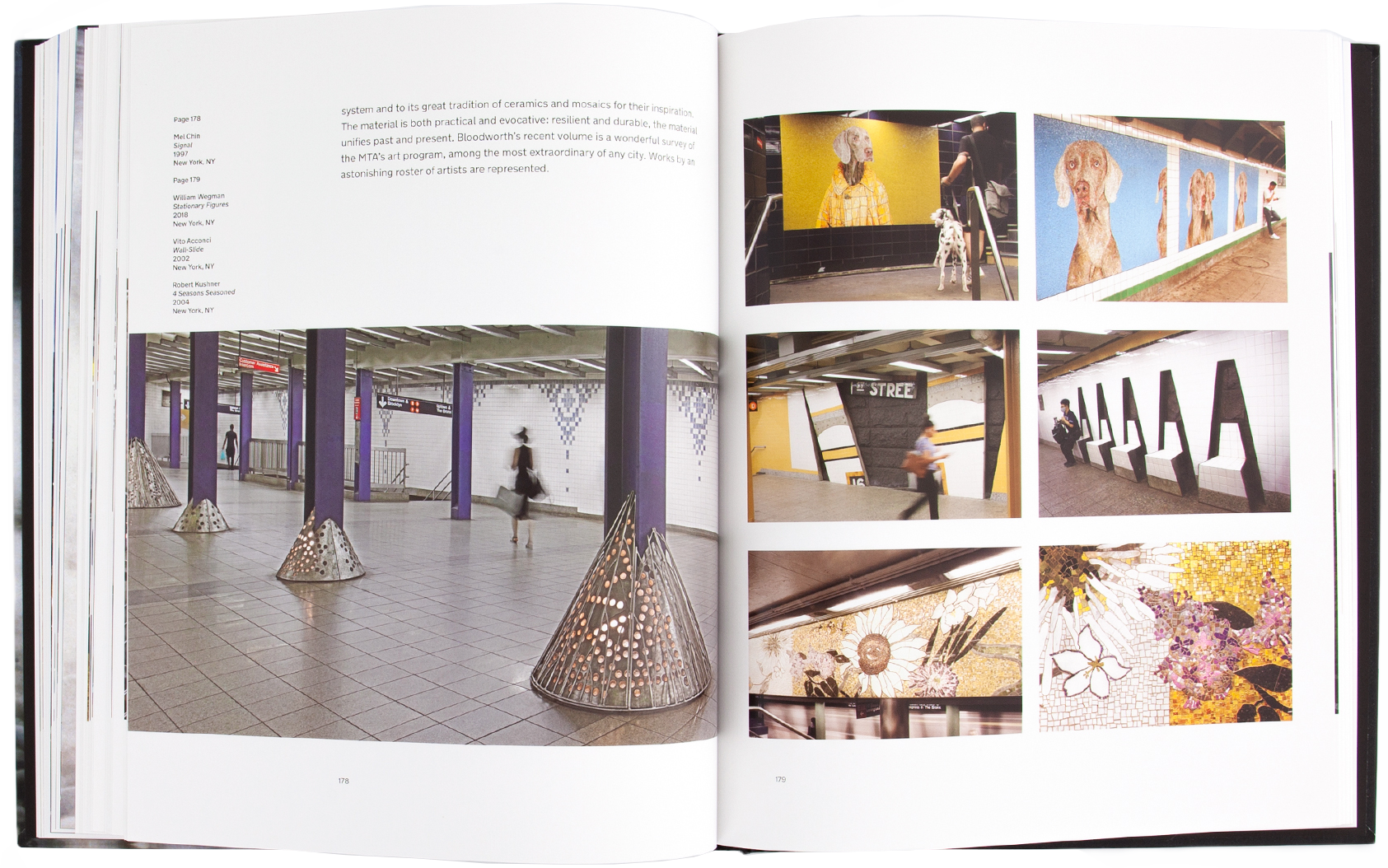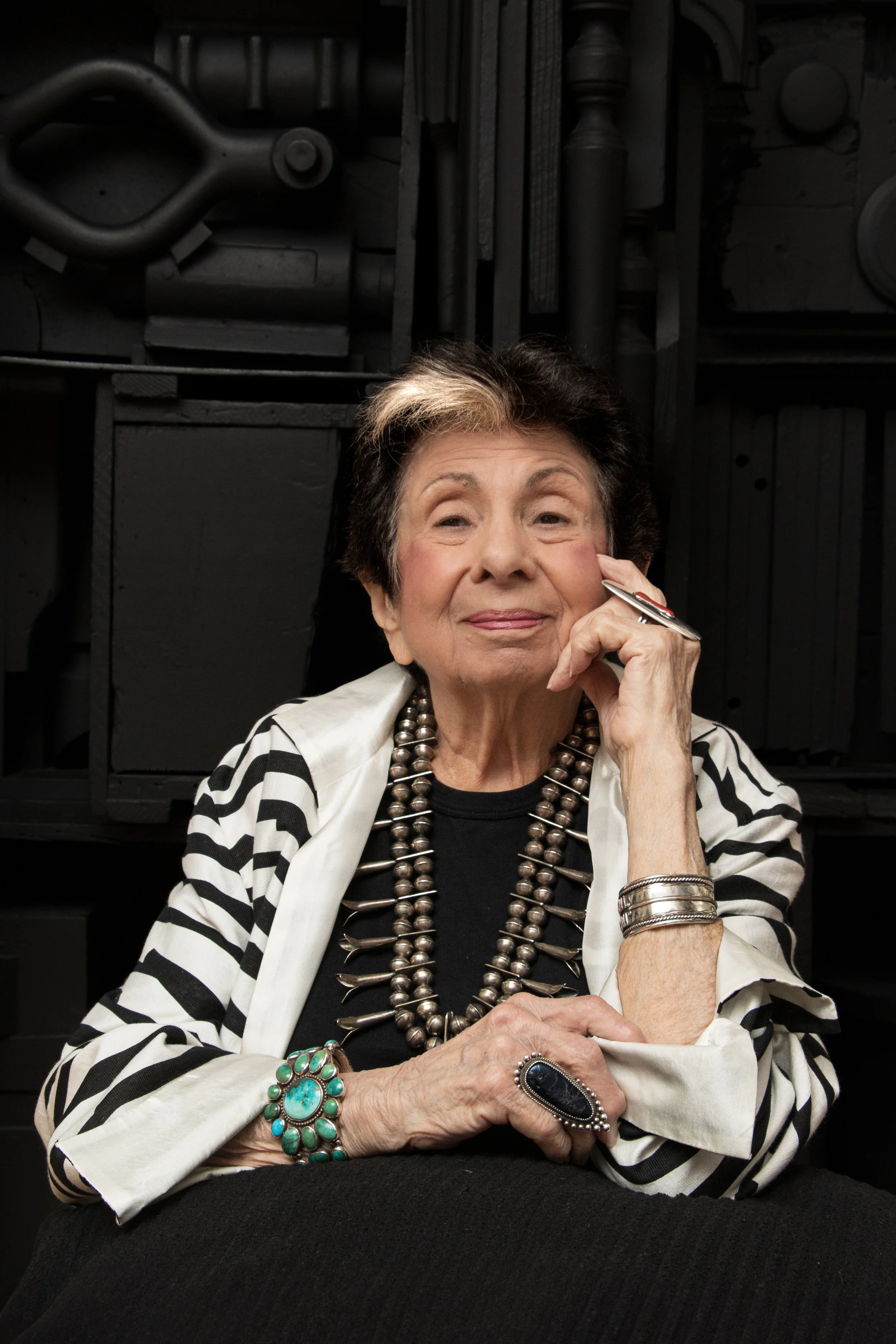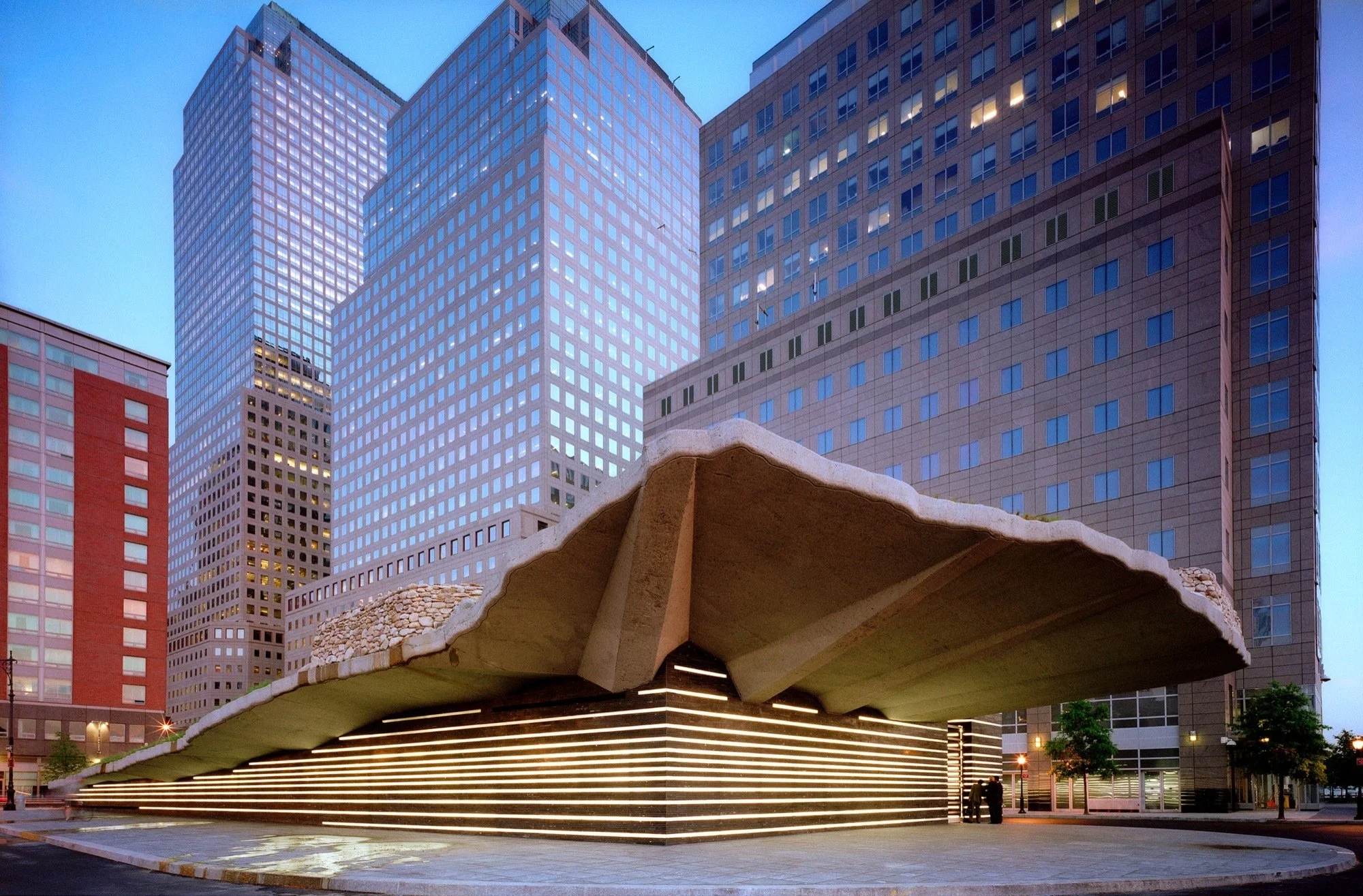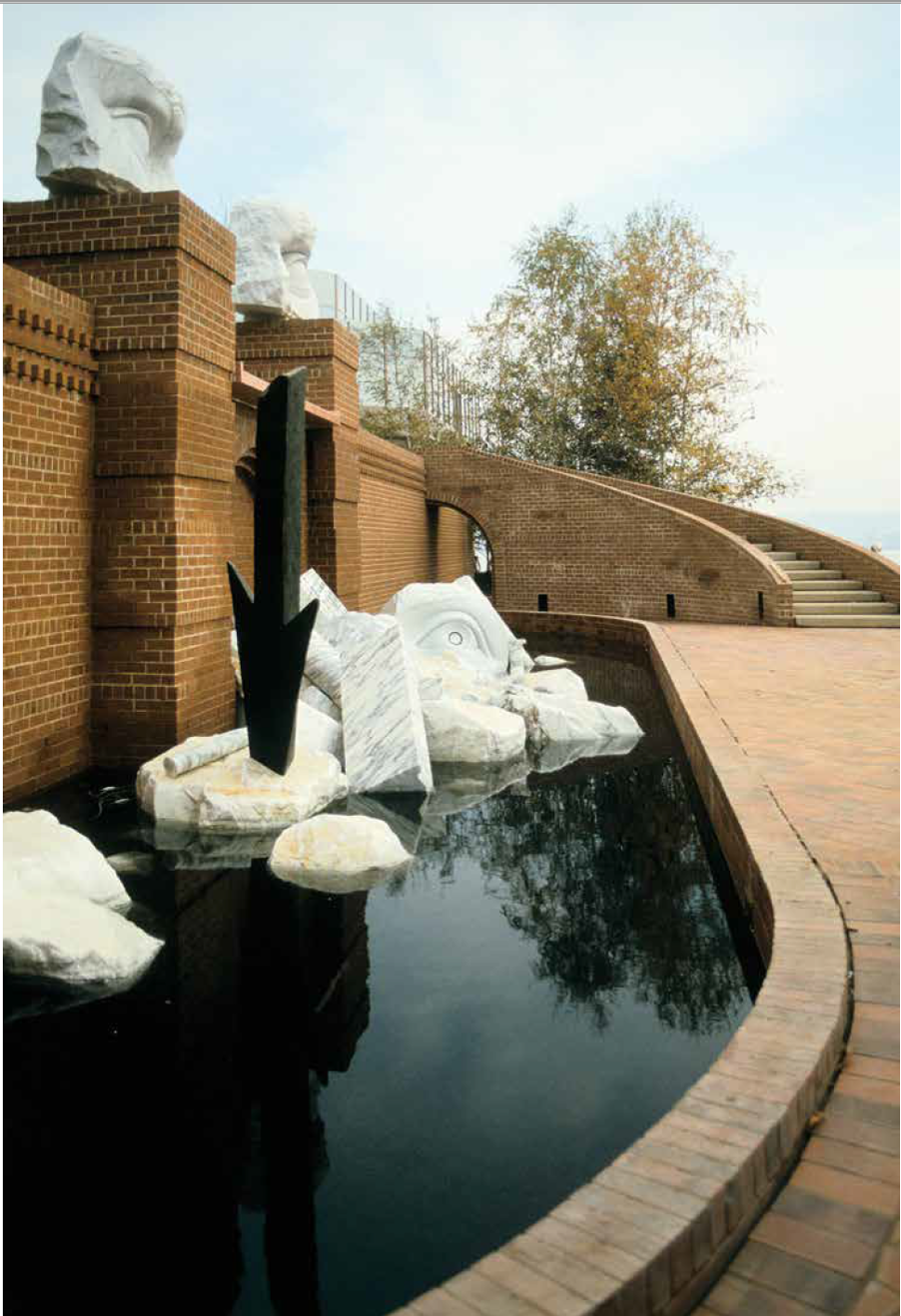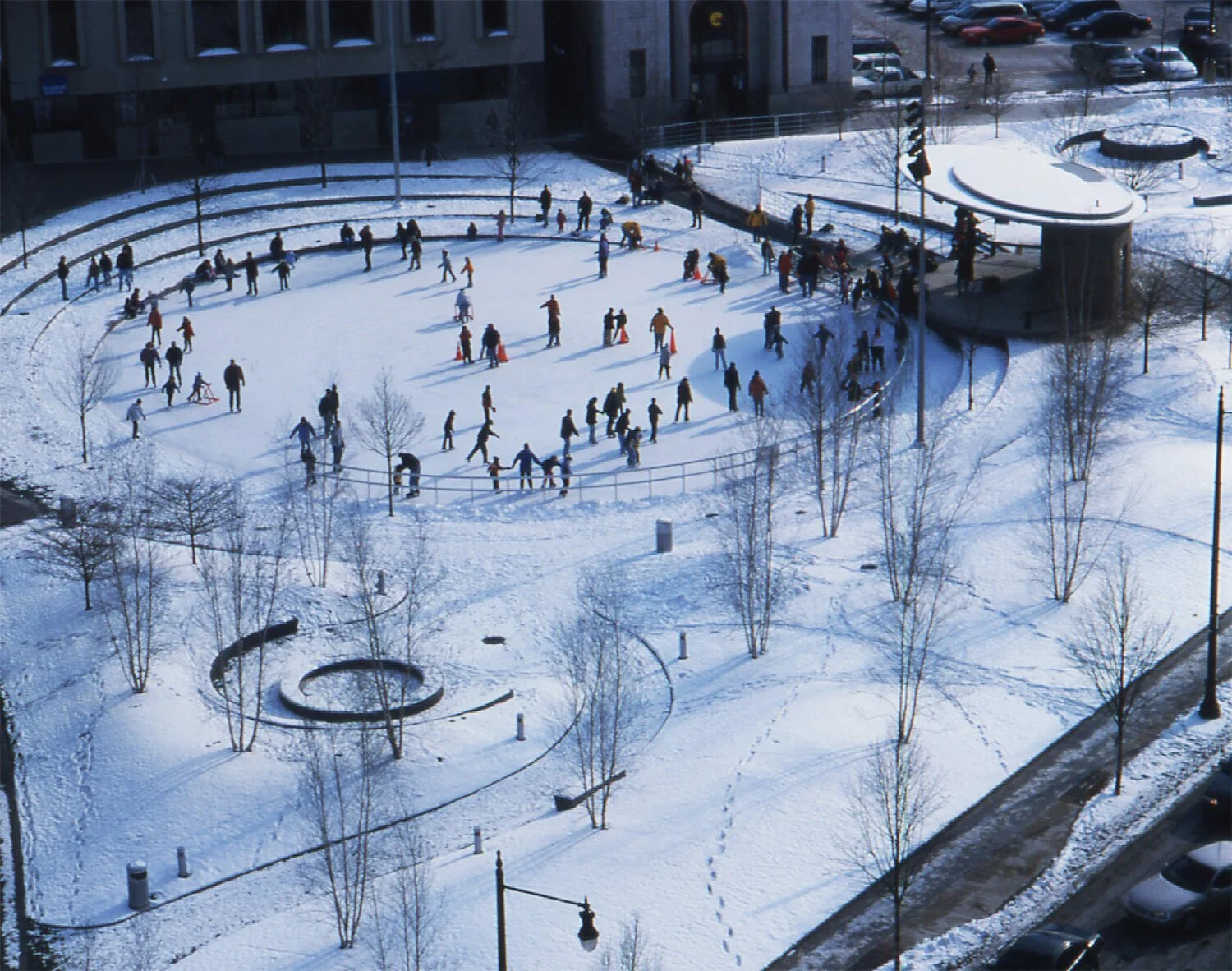THE PRIVATE EYE IN PUBLIC ART
BY JOYCE POMEROY SCHWARTZ
The history of public art begins with the cave paintings and sculptural glories of Greece and Rome; it also tells of neglect and destruction, from the ancient Bamyan sculptures to Penn Station.
The Private Eye in Public Art, by curator and art advisor Joyce Pomeroy Schwartz, brings the story up-to-date with a first-hand commentary about conceptual and land art made for public places.
The book is an indispensable guide to the perils, pains, and pleasures of making art for architecture, how people respond to that art, and how and why that reception may change over time. This book is for all who are involved in the creation, exhibition, and preservation of contemporary public art: artists, selection committees, scholars, students, art professionals, and the wider public.
Foreward by Eleanor Heartney | Published by ORO Editions
“If I have one conviction, it is that the public deserves enduring art by our greatest artists. I believe public art should be museum quality, and the artist selection process should have excellence as its primary goal. Saying that, issues of time, space, community, and content are issues to be explored and considered only in the hands of the right artist for the right project."
JOYCE POMEROY SCHWARTZ
The Private Eye in Public Art
FEATURED PROJECTS
BRIAN TOLLE, 2002
MAREN HASSINGER, 2018
ANNE & PATRICK POIRIER, 1986
ALICE AYCOCK, 1998
JOYCE KOZLOFF, 1983
MAYA LIN, 2001
ROMARE BEARDEN, 1982
CHARLES ROSS, 1985
ROBERT MORRIS, 1992
EXCERPT
“The monumental social, political, and cultural upheavals of the 1960s put a new face on the First Amendment, civil disobedience, and ownership of the public realm. Counter-culture artists of the 1960s and 1970s challenged the museum’s hegemony and its relevance to conceptual art.
Having moved beyond “art for art’s sake” into socially relevant, environmental and conceptual art, liberating themselves from the strictures of galleries and museums, and rejecting heroic art or art-as monument, artists claimed our country’s varied, vast, and powerful landscape. It captivated, inspired, and would define artists as distinctly American. Nature and grand spaces – the “god-made art” of white sand beaches, high deserts, Rocky Mountains, expansive prairies and forests – were fertile ground for the articulation of an American aesthetic.
In 1962, Rachel Carson’s Silent Spring launched an environmental awakening, shining a light on the powerful – and sadly, often negative – impact human beings have on the natural world. Finding inspiration for both form and content in the physical character, archaeology, and socio-historic context of a site, and in many cases, in reverence for the grandeur of the Western frontier, artists followed suit, dramatizing our collective obligation to preserve limited resources and safeguard the future of our planet.
Robert Smithson and Nancy Holt were great champions of reclamation art and earthworks. Their appreciation of natural wonders, awareness of their potential devastation by industry, and critique of the thoughtless misuse of American resources brought artists and scientists together in common cause. Smithson said: “My own experience is that the best sites for ‘earth art’ are sites that have been disrupted by industry, reckless urbanization, or nature’s own devastation … The Spiral Jetty is built on a dead sea, and The Broken Circle Spiral Hill in a working sand quarry. Such land is cultivated or recycled.” Spiral Jetty became symbolic of this environmental consciousness: articulating a vision of the American landscape and transforming it into art, Smithson shined a light on both its richness and its vulnerability. And in the Utah desert, artist Nancy Holt, created Sun Tunnels, a paean to the power of the sun and stars.”
THE PRIVATE EYE IN PUBLIC ART
Excerpt from pp. 46-47
NANCY HOLT, 1976
LOUISE NEVELSON, 1976
ADVANCE PRAISE


